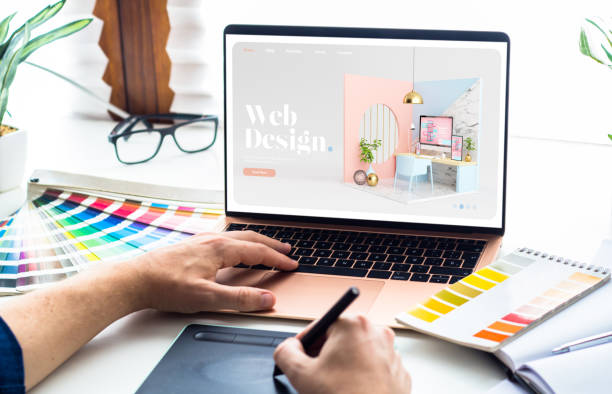Las Vegas SEO Firm Offering Innovative Digital Marketing Strategies
Las Vegas SEO Firm Offering Innovative Digital Marketing Strategies
Blog Article
Imaginative Internet Design Solutions for Modern and Engaging Internet Sites
In the world of web style, the search of modern and appealing remedies has ended up being increasingly vital for businesses aiming to capture customer interest. By integrating bold shade systems, interactive components, and responsive formats, developers can develop experiences that not only resonate with customers but also improve brand name identity.
Embracing Strong Color Pattern
In web layout, the strategic use vibrant color pattern can substantially improve customer engagement and brand name identity. By utilizing dynamic tones, designers can produce visually striking web sites that capture interest and foster a remarkable experience. A well-chosen color scheme not only reflects a company's worths but additionally evokes details feelings that can affect customer actions.
Bold colors can be employed to lead users' attention to crucial elements such as contact us to activity, improving conversion rates. Using contrasting shades for buttons and web links can make these aspects stand out, triggering customers to interact more readily. A cohesive shade plan across the internet site enhances brand name recognition, producing a feeling of familiarity and depend on amongst visitors.
However, it is vital to balance vibrant shades with ample white room to stay clear of overwhelming customers. Reliable use typography likewise complements strong shades, making sure readability while keeping aesthetic appeal. Ultimately, embracing strong color pattern in web design not just elevates visual top quality yet likewise plays an indispensable duty in accomplishing calculated service goals, making it a crucial factor to consider for modern-day internet advancement.

Utilizing Interactive Aspects
Interactive components are important in contemporary internet design, as they substantially boost customer involvement and develop a more dynamic searching experience. By including attributes such as computer animations, float effects, and clickable elements, sites can motivate individuals to check out material extra thoroughly and return for future visits.

Micro-interactions, such as refined animations when a switch is clicked or a type is submitted, can also boost the individual experience by providing prompt feedback. These little details can make the internet site really feel even more responsive and alive, cultivating a feeling of link between individuals and the site.
Moreover, gamification components, such as benefits for finishing details actions, can inspire customers to engage with the material much more deeply. By thoughtfully incorporating these interactive components, internet developers can create a remarkable and interesting on-line experience that resonates with individuals and urges them to return.
Implementing Responsive Design
Carrying out responsive layout is critical in today's multi-device landscape, making sure that internet sites give an ideal watching experience throughout different display dimensions. As individuals significantly access the net via smartphones, tablet computers, and desktop computers, a one-size-fits-all method is no much longer feasible. Receptive design permits seamless navigating and communication, adapting design and web content to fit the tool being utilized.
Key principles of responsive layout consist of fluid grids, adaptable pictures, and media questions. Fluid grids use relative units, such as percents, instead of dealt with pixels, allowing elements to resize proportionately. Adaptable pictures range within their containing components, preventing overflow and keeping visual honesty. Media questions facilitate the application of various styles based on the tool's features, such as width, elevation, or resolution, enabling designers to tailor the user experience effectively.
Furthermore, receptive layout enhances search engine optimization efficiency, as internet search my response engine favor mobile-friendly Full Report sites. By executing responsive layout, services not just enhance user complete satisfaction and engagement yet also enhance their reach in a competitive electronic landscape. As innovation proceeds to evolve, adopting receptive style has actually come to be a basic practice for any contemporary and interesting site.
Incorporating Multimedia Web Content
Multimedia web content plays an essential duty in producing appealing and vibrant internet experiences that capture customers' interest and improve understanding. By combining message, pictures, audio, and video, internet sites can supply a richer narrative that attract different learning designs and preferences. This combination not just reinforces individual engagement but also aids in sharing complex concepts succinctly.
Incorporating high-grade pictures and infographics can break up textual material, making it much more digestible. In a similar way, video clip tutorials and discussions can provide comprehensive understandings that fixed content might not totally interact. Audio aspects, such as podcasts or background songs, can also improve the atmosphere of a website, developing a much more immersive experience.
In addition, the tactical use of multimedia can enhance search engine optimization efficiency, as search engines prefer varied content kinds, increasing presence. It is important to guarantee that multimedia elements do not impede helpful site page tons times, as this can lead to user disappointment. By balancing multimedia combination with performance considerations, web designers can produce aesthetically appealing and functional sites that reverberate with users, cultivating a much deeper link and motivating return sees.
Prioritizing Customer Experience

To attain an ideal individual experience, designers must concentrate on numerous crucial concepts. Clear phone calls to activity, understandable typography, and arranged content guide customers, reducing cognitive tons.
Ultimately, prioritizing UX not only raises customer contentment yet also drives involvement and conversion prices, making it a vital aspect of contemporary internet design techniques. By placing customers at the facility of design efforts, sites can produce enduring, positive perceptions that urge return sees.
Verdict
Finally, modern web design options that highlight bold color design, interactive components, responsive style, and multimedia material significantly boost individual interaction and complete satisfaction. Focusing on individual experience via clear layouts and continual feedback even more contributes to improved conversion prices. By embracing these techniques, internet sites can effectively captivate site visitors and reinforce brand identity, ultimately leading to an extra dynamic and engaging on the internet existence. The assimilation of these design concepts is important for accomplishing modern-day internet style objectives.
Report this page